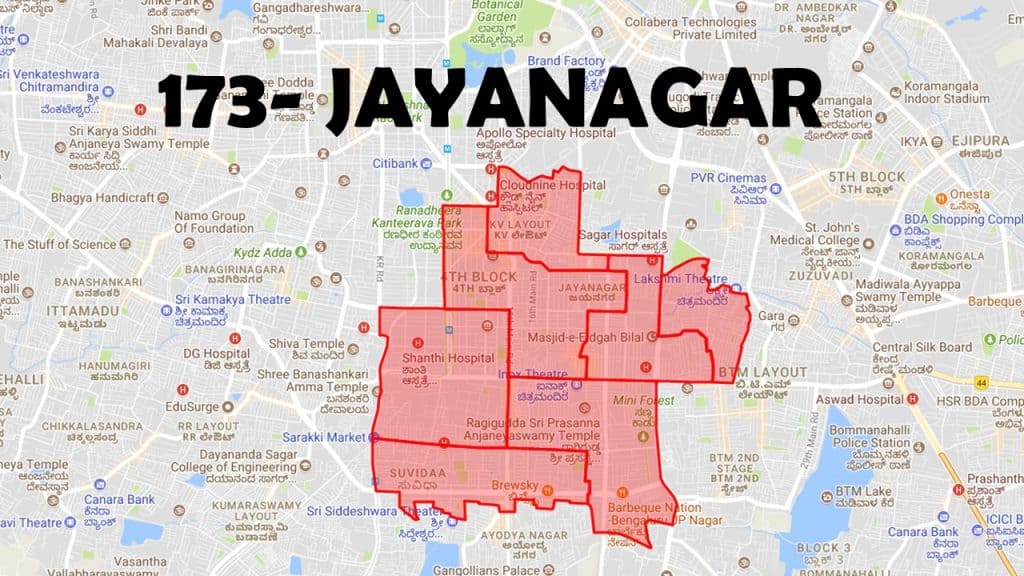Up to two million school children in Bengaluru are exposed to dangerous air pollution during their school day, risking asthma, allergic rhinitis and other chronic health impacts, according to a report produced by the Global Climate and Health Alliance (GCHA) and Health and Environment Alliance (HEAL). The report was released by Healthy Air Coalition, Bengaluru, last week.
Healthy Air Coalition brings together various stakeholders such as health researchers, heart and lung doctors, and public health institutes and patients to collaborate on air monitoring initiatives, share information about air pollution and health, build the capacity of health professionals, and provide insights for its control.
The report “Protecting Bengaluru’s Children: Time To Act For Clean Air Around Schools” examined air quality data recorded in the vicinity of 270 schools for 14 months, from June 2019 to July 2020. It revealed that 70,000 children attending these schools are breathing polluted air all year round. The air quality is particularly poor during the seven months of October to April and during school departure times (3 – 5 pm) in a regular school day.

The study used data from an independent monitoring network set up in 27 major locations in 18 districts of Bengaluru by the Healthy Air Coalition, including at some of the city’s busiest roads, including Brigade Road – one of the city’s key shopping districts – and at Jayachamarajendra Road (aka JC Road) site of the city’s town hall, and Corporation Circle. The study also looked at Bengaluru’s tech hub Electronic City, as well as the highly congested Bannerghatta Road.
Read More: Traffic cops, children worst hit by Bengaluru’s air pollution
Why Bengaluru?
Whereas air pollution is a national problem, it is most frequently in the spotlight in the capital Delhi. It is often overlooked by the public as well as policy in southern cities like Bengaluru. A report released in 2020 studied the health and economic impacts of air pollution in Indian cities by estimating the attributable deaths and disability-adjusted life-years.
It basically tried to estimate the lost output due to premature deaths of those who could have been alive if not for air pollution. According to this study, Karnataka lost USD 568 million to air pollution in 2019. With Bengaluru’s fast growth and rapid urbanisation, air pollution has also accelerated due to heavy vehicular congestion, construction, waste burning, and the decline in green spaces, making it an air pollution hotspot.
Read More: Delhi: Super commission fiddles while air pollution turns deadly
Why Children?
Children are particularly vulnerable to air pollution because of their growing bodies, ineffective nasal filtering capacity, and an underdeveloped immune system. The effects of air pollution on children can be acute as well as long-term and may manifest over a number of years in the form of asthma, allergic rhinitis along with other respiratory and neurological conditions. This is especially a matter of concern for children who belong to less affluent families or live in areas of low socioeconomic status as their exposure to traffic is higher. These children also experience higher asthma rates.

Findings of the Report
Air quality measurements for Brigade Road (12 schools) and JC Road (10 schools) found average PM2.5 values (during school hours) of 40 ug/m3 and 37 ug /m3 respectively, while Corporation Circle (8 schools) measured 29 ug/m3. The World Health Organization (WHO) considers daily concentrations for particulate matter PM2.5 above 25 ug/m3 to be harmful to health.
The US Environmental Protection Agency (EPA) has set a standard of 12 ug/m3 as the annual average, while the Indian clean air standard is 40 ug/m3 for the year. In comparison, the average concentrations in Bengaluru during June 2019 – July 2020 reached 40.7 ug/m3, well above the annual WHO guidelines and US EPA standards, and slightly above the Indian clean air standard. Between the months October to April, air quality was particularly poor, and for December 2019 and January 2020, the PM values were even above the Indian daily national clean air standard.
Jayanagar was seen to have disproportionately abnormal values of PM2.5 during school hours. Other areas with poor PM2.5 values, as per EPA standards were MS Ramaiah City Layout, Gottigere, HSR Layout, JC Road, Koramangala, Bellandur, Brigade road, and Mathikere.

The study speculates that the poor air quality is not due to school-going vehicular traffic alone as it compared the air quality during weekdays versus weekends when there is no school-going traffic. There was no significant change, which means that other sources of pollution like overall vehicular traffic and construction work perhaps contribute to air pollution more significantly.
Recommendations for School level Leadership & Parent Organisations
The report recommends increase in awareness, encouraging of alternate modes of transport like car-pooling, shift in arrival and departure times, and investing in better ventilation in classrooms. Greening of school must be encouraged and parent organisations should consider forming clean air groups and work with existing initiatives to improve the schools’ environment, the report says.
“Children are especially vulnerable to the adverse health effects of air pollution, but have no control over environments where they live, learn and play. We have a duty to protect children from airborne toxins, because they can’t protect themselves. Doing so requires political will, a multi-sector commitment to improving air quality, and sustained collaboration towards comprehensive solutions. It also requires better monitoring of levels and sources of air pollution, to inform efforts to minimize children’s exposure.”
Dr.Linda Arnold, Director, IPA LEAD: Child Health Emerging Leaders Program &
Associate Professor of Pediatrics and Emergency Medicine, Yale School of Medicine, who contributed to the report
A part of this study was conducted after the imposition of the nationwide lockdown in 2020, which means that even the values are an underestimate, the report cautions. Bengalureans have an urgent problem on their hands which requires immediate policy, civic, and health initiatives.
Also Read:
This is a serious issue, there are a lot of schools that runs in a congested place in Bengaluru. In some cases students cross the roads to reach the playground.